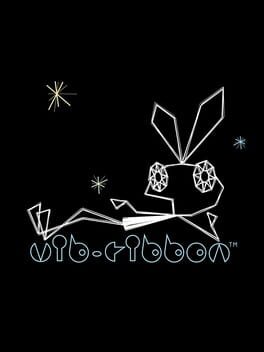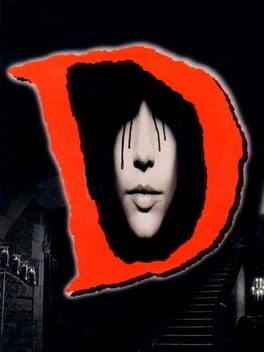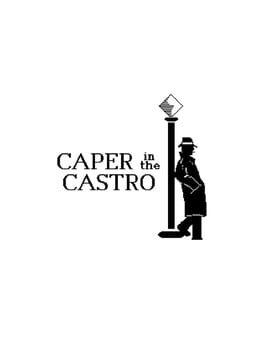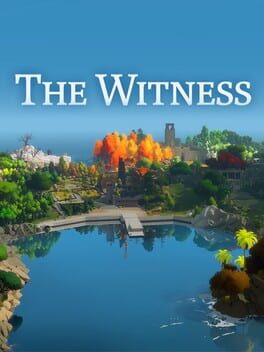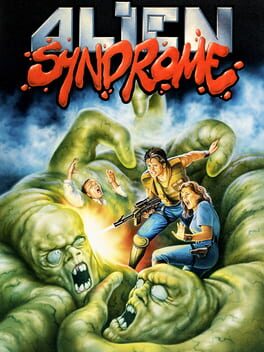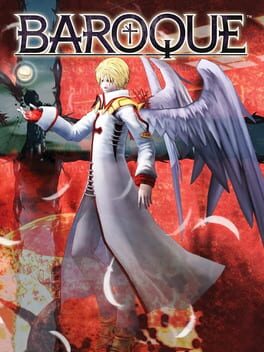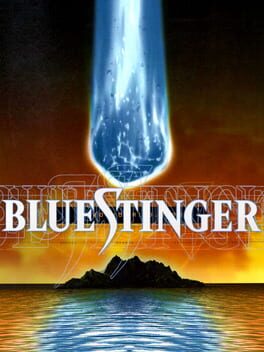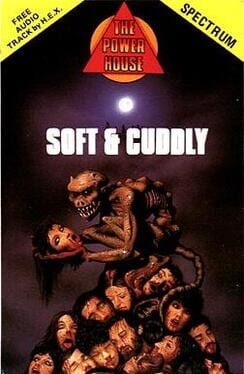eigen
14 reviews liked by eigen
Oukoku no Grand Chef
1996
Pretty interesting cooking RPG for the 3DO, that is extremely rare and expensive sadly. Couldn't get much out of it, since I didn't really follow what was happening (none of the dialogue is in text, it is all spoken). It moves at a very slow pace, to be frank, but it is interesting to see the lovely graphics and how far they could push the 3DO. You can literally talk to every NPC. It's also neat to see a game officially sponsored by Yukio Hattori, a professional celebrity chef in Japan. A fun and oft relaxing curio, with some really really actually difficult cooking segments, and some not so difficult (at least to where I got) RPG segments. Most of the game is gathering ingredients from the money you get from fights to make these recipes, which allow you to progress. I only really got like halfway through the second 'area'. Give it a try, it's definitely worthy of getting more attention, but you need the patience of a cat-herder to be able to power through if you don't know Japanese.
BeamNG.drive
2015
(aaand another 50 hours after my last review was written, 15 in the past week ugh)
most other land vehicle simulations, including the truck simulators from SCS software, just don't quite capture the entire spectrum of both joy and terror that comes with vehicle operation with respect to the capabilities of said vehicle. beamng is "vehicle itself" sim first and foremost. that does not mean that it isn't either a driving or racing sim, nor does it mean that the act of operating the vehicle under any scenario is secondary to the softbody vehicle simulation. no other computer program quite captures the entire spectrum of emotions that the stupid metal death boxes can bring.
i've become quite fond of the completely fictional vehicles here, even if they're amalgamations of stuff that exists/existed (still wishing cash for clunkers never happened), they're all just incredibly cute. the manufacturers' inspirations are pretty obvious to the type of people who can correctly guess the make of a vehicle at night from either headlights or taillights alone about 85% of the time (ie: gavril is both fomoco & gm, ibishu is both honda & toyota, bruckell is chrysler, etc). this approach makes it far more interesting than Yet Another Sim Racer With Perfect, Licensed Recreations Of The Average Average Person's "Dream Car"s. These fictional fantasy cars (not to be confused with "Dream Car"s) that have no need for a license agreement from a manufacturer is also preferable to the approach CAVE and Genki took with the Touge MAX and (most of the) Shutokou Battle games, respectively, with their memorable machines like "I Swear It's Not A Toyota AE86 Please Leave Us Alone".
there is nothing like the k-platform chrysler lebaron, the platonic ideal of american automotive malaise, in asseto corsa or gran turismo, but beamng has you covered with the bruckell legran. (mini)vans are a rarity in racing games, more often implemented as a functional joke option. in beamng i can toss a 400-ish hp engine in a 1950's american boatycar, watch as the torque either causes the machine to veer in the direction of the engine's rotation (then off the road) with the slightest bit of throttle, or break the driveshaft as soon as i lift up the clutch. in beamng i, more often than not, just drive. (maybe i would race anything other than the clock here if my machine could handle more than just the map and the vehicle i'm driving)
my favorite machine in this game is without a doubt the ibishu miramar, incredibly reminiscent of the 1st generation toyota corolla and BMW 2002, both 4 cylinder subcompact rear wheel drive boxes from the '60s. for a time i owned arguably the last relative of the BMW 2002, of one of the last BMW e30s produced with a 4 cylinder engine (in retrospect i wouldve been better off with one of the earlier 4cyl e30s, fervent dislike for the m42 engine and drivetrain from a wrench-wielding standpoint). with that e30 i learned what a burning clutch smells like real quick. operating the ibishu miramar gives me the same spectrum of emotion that i received in my time driving the tiny e30: the joy of making the rear tires spin, the panic that came with slamming on the brakes in the wet (sorry it snows like once every other year here no experience w ice :| ), the fear of ending up flipped or wrapped around a tree while making those rear tires spin too much in a turn, the relief that comes with recovering after nearly losing all control of the vehicle, and the satisfaction that comes with keeping control of the vehicle in situations where i intentionally induce bad grip >:3.
the only emotion missing is the fear of my death or destruction of the vehicle due to a skill-issue accident, but i do get to see what would happen in that scenario, and i'm thankful i'm keeping it virtualized every single time it does.
(if you're wondering, my "Dream Car"s are either a mercedes w123 240d wagon, or a geo metro hatchback. both are about as fast as on another)
most other land vehicle simulations, including the truck simulators from SCS software, just don't quite capture the entire spectrum of both joy and terror that comes with vehicle operation with respect to the capabilities of said vehicle. beamng is "vehicle itself" sim first and foremost. that does not mean that it isn't either a driving or racing sim, nor does it mean that the act of operating the vehicle under any scenario is secondary to the softbody vehicle simulation. no other computer program quite captures the entire spectrum of emotions that the stupid metal death boxes can bring.
i've become quite fond of the completely fictional vehicles here, even if they're amalgamations of stuff that exists/existed (still wishing cash for clunkers never happened), they're all just incredibly cute. the manufacturers' inspirations are pretty obvious to the type of people who can correctly guess the make of a vehicle at night from either headlights or taillights alone about 85% of the time (ie: gavril is both fomoco & gm, ibishu is both honda & toyota, bruckell is chrysler, etc). this approach makes it far more interesting than Yet Another Sim Racer With Perfect, Licensed Recreations Of The Average Average Person's "Dream Car"s. These fictional fantasy cars (not to be confused with "Dream Car"s) that have no need for a license agreement from a manufacturer is also preferable to the approach CAVE and Genki took with the Touge MAX and (most of the) Shutokou Battle games, respectively, with their memorable machines like "I Swear It's Not A Toyota AE86 Please Leave Us Alone".
there is nothing like the k-platform chrysler lebaron, the platonic ideal of american automotive malaise, in asseto corsa or gran turismo, but beamng has you covered with the bruckell legran. (mini)vans are a rarity in racing games, more often implemented as a functional joke option. in beamng i can toss a 400-ish hp engine in a 1950's american boatycar, watch as the torque either causes the machine to veer in the direction of the engine's rotation (then off the road) with the slightest bit of throttle, or break the driveshaft as soon as i lift up the clutch. in beamng i, more often than not, just drive. (maybe i would race anything other than the clock here if my machine could handle more than just the map and the vehicle i'm driving)
my favorite machine in this game is without a doubt the ibishu miramar, incredibly reminiscent of the 1st generation toyota corolla and BMW 2002, both 4 cylinder subcompact rear wheel drive boxes from the '60s. for a time i owned arguably the last relative of the BMW 2002, of one of the last BMW e30s produced with a 4 cylinder engine (in retrospect i wouldve been better off with one of the earlier 4cyl e30s, fervent dislike for the m42 engine and drivetrain from a wrench-wielding standpoint). with that e30 i learned what a burning clutch smells like real quick. operating the ibishu miramar gives me the same spectrum of emotion that i received in my time driving the tiny e30: the joy of making the rear tires spin, the panic that came with slamming on the brakes in the wet (sorry it snows like once every other year here no experience w ice :| ), the fear of ending up flipped or wrapped around a tree while making those rear tires spin too much in a turn, the relief that comes with recovering after nearly losing all control of the vehicle, and the satisfaction that comes with keeping control of the vehicle in situations where i intentionally induce bad grip >:3.
the only emotion missing is the fear of my death or destruction of the vehicle due to a skill-issue accident, but i do get to see what would happen in that scenario, and i'm thankful i'm keeping it virtualized every single time it does.
(if you're wondering, my "Dream Car"s are either a mercedes w123 240d wagon, or a geo metro hatchback. both are about as fast as on another)
Vib-Ribbon
1999
Me: I played through 10,000 Gecs on vib ribbon.
Random horse: Nuzzles me
Me: laughs Easy now.
Do you think there's a dude who listens to all of his music through this game? Like "Yeah dude the new peggy is great but lemme tell you "Steppa Pig" makes a TERRIBLE Vib-Ribbon level!"
Maybe i should become that person...
Random horse: Nuzzles me
Me: laughs Easy now.
Do you think there's a dude who listens to all of his music through this game? Like "Yeah dude the new peggy is great but lemme tell you "Steppa Pig" makes a TERRIBLE Vib-Ribbon level!"
Maybe i should become that person...
Celeste
2018
D
1995
Caper in the Castro
1989
'We floated off into that quiet world which love made possible because the power devils had been admitted and therefore banished.'
– Mary Wings, She Came Too Late, 1986.
Played during the Backloggd’s Game of the Week (4th Jul. – 10th Jul., 2023).
The 1980s saw a shift in American lesbian fiction away from coming-out stories and towards the detective genre. This transition was not entirely smooth and was met with highly polarised critical responses. Reagan's presidency unleashed a national conservative fever that sought to normalise homophobia, while the AIDS epidemic was greeted with outright inaction by the federal government. Anna Wilson defines this decade as a point of transition for feminist and lesbian identities, as 'the focus of the women's movement had gradually shifted away from an emphasis on exploring and enhancing the "liberated" self toward a preoccupation with that self as embattled and endangered' [1]. Furthermore, the new discourses on sexuality also sought to de-essentialise lesbian sexual identities, rejecting the clichéd labels that sharply distinguished between butch and femme.
American lesbian detective fiction in the 1980s
Unlike the coming-out story, which revolves around introspection and the exploration of domestic life – since the discovery of lesbian romance takes place largely out of the public eye – lesbian detective fiction reinvests the public sphere, especially the streets. Despite its persistent aura of threat to women, the street has become a place where lesbian detectives can express themselves. Some take on the authority of institutions: Kate Delafield, the protagonist of Katherine V. Forrest's novels, recognises the structural abuse caused by the family, a place of male domination, and upholds the weight of the law – which she believes to be just – as the only way to bring about change in society. Not all detectives are as reformist as Delafield, but the whole sub-genre recognises that society is constructed in the service of male power [2].
C. M. Ralph's Caper in the Castro echoes these changes. The player assumes the role of Tracker McDyke, investigating the disappearance of her girlfriend, Tessy LaFemme. Behind this mystery lies a series of murders that underline a vast anti-LGBT conspiracy on Castro Street – the main avenue in San Francisco's historic gay district. Finding one's way around the various screens is difficult at first, as the interactions are so rigid and the context so minimal, but after a few minutes it becomes clear that Castro Street is plagued by a wave of violence. Ralph – undoubtedly inspired by the events leading up to the White Night riots (1979) – repeats the same stern observations as crime literature, highlighting not only public inaction but also the murderous impulses of the privileged ruling class. The title makes no attempt to hide its ambitions, ridiculing white heterosexuality through the detective's pithy tone.
Stigma reversal and agency through the detective's eyes
Caper in the Castro is not the first game to explore the place of lesbians in a patriarchal, heteronormative society. Moonmist (1986), another investigative game, made this a crucial aspect of one of its four scenarios. However, Caper in the Castro is notable for being written from the perspective of the lesbian character. Whereas the events of Moonmist are merely tragic, Tracker McDyke reclaims her agency and directly confronts the oppressive system. Many of the interactions necessary to progress are resolved by gunfire, reclaiming this symbol of masculinity from hardboiled fiction and turning it into a woman's preferred instrument. Surprisingly, Caper in the Castro also avoids essentialisation, thanks to its detective's perpetually mocking gaze; although some passages are clumsier and rely on glib puns, they nonetheless overturn the insults and 'social stigma' [3].
While the somewhat cryptic nature of some of the interactions is regrettable, sometimes made more complex than necessary by the overly rigid text parsing system, Caper in the Castro remains an enjoyable game for its lack of concessions and the tribute it pays to San Francisco's LGBT community, which suffered reactionary violence. Despite the tragedy of the murders, there is something comforting about following a detective who ultimately succeeds in her mission, self-assured and with such a witty take on the world around her. Much like lesbian crime fiction, Caper in the Castro is perhaps less interested in exploring the gender and sexual identity of its protagonist than in the means available to fight injustice. Anna Wilson mentions the contradiction of the lesbian detective who somehow fits in with the rules of the social order while performing her homosexuality in public; Caper in the Castro avoids this dilemma: its answer seems to be, unequivocally and albeit naively, the revolution.
__________
[1] Anna Wilson, 'Death and the Mainstream: Lesbian Detective Fiction and the Killing of the Coming-Out Story', in Feminist Studies, vol. 22, no. 2, 1996, p. 252.
[2] There is an extensive historiographical debate about whether lesbian detective fiction can accommodate reformist, assimilationist and individualist positions without denying its radical heritage. The question is complex and deserves a close reading of the various novels of the period, but a central idea is that the lesbian detective, because of the female gaze, does not have the same lived experience of the streets as the hardboiled, misogynistic male detective – this is particularly explicit in Barbara Wilson's Sisters of the Road (1986). The traditional hardboiled view is that the detective's acts of justice are isolated and cannot change society; the feminine and lesbian view emphasises above all that 'violence is never random; there are no haven' (Anna Wilson, op cit., p. 266). See also Catharine R. Stimpson, 'Zero Degree Deviancy: The Lesbian Novel in English', in Critical Inquiry, vol. 8, no. 2, 1981, pp. 363-379 and Timothy Shuker-Haines, Martha M. Umphrey, 'Gender (De)Mystified: Resistance and Recuperation in Hard-Boiled Female Detective Fiction', in Jerome H. Delamater, Ruth Prigozy (ed.), The Detective in American Fiction, Film, and Television, Greenwood Press, Westport, 1998, pp. 71-82.
[3] Erving Goffman, Stigma: Notes on the Management of Spoiled Identity, Simon & Schuster, New York, 1963.
– Mary Wings, She Came Too Late, 1986.
Played during the Backloggd’s Game of the Week (4th Jul. – 10th Jul., 2023).
The 1980s saw a shift in American lesbian fiction away from coming-out stories and towards the detective genre. This transition was not entirely smooth and was met with highly polarised critical responses. Reagan's presidency unleashed a national conservative fever that sought to normalise homophobia, while the AIDS epidemic was greeted with outright inaction by the federal government. Anna Wilson defines this decade as a point of transition for feminist and lesbian identities, as 'the focus of the women's movement had gradually shifted away from an emphasis on exploring and enhancing the "liberated" self toward a preoccupation with that self as embattled and endangered' [1]. Furthermore, the new discourses on sexuality also sought to de-essentialise lesbian sexual identities, rejecting the clichéd labels that sharply distinguished between butch and femme.
American lesbian detective fiction in the 1980s
Unlike the coming-out story, which revolves around introspection and the exploration of domestic life – since the discovery of lesbian romance takes place largely out of the public eye – lesbian detective fiction reinvests the public sphere, especially the streets. Despite its persistent aura of threat to women, the street has become a place where lesbian detectives can express themselves. Some take on the authority of institutions: Kate Delafield, the protagonist of Katherine V. Forrest's novels, recognises the structural abuse caused by the family, a place of male domination, and upholds the weight of the law – which she believes to be just – as the only way to bring about change in society. Not all detectives are as reformist as Delafield, but the whole sub-genre recognises that society is constructed in the service of male power [2].
C. M. Ralph's Caper in the Castro echoes these changes. The player assumes the role of Tracker McDyke, investigating the disappearance of her girlfriend, Tessy LaFemme. Behind this mystery lies a series of murders that underline a vast anti-LGBT conspiracy on Castro Street – the main avenue in San Francisco's historic gay district. Finding one's way around the various screens is difficult at first, as the interactions are so rigid and the context so minimal, but after a few minutes it becomes clear that Castro Street is plagued by a wave of violence. Ralph – undoubtedly inspired by the events leading up to the White Night riots (1979) – repeats the same stern observations as crime literature, highlighting not only public inaction but also the murderous impulses of the privileged ruling class. The title makes no attempt to hide its ambitions, ridiculing white heterosexuality through the detective's pithy tone.
Stigma reversal and agency through the detective's eyes
Caper in the Castro is not the first game to explore the place of lesbians in a patriarchal, heteronormative society. Moonmist (1986), another investigative game, made this a crucial aspect of one of its four scenarios. However, Caper in the Castro is notable for being written from the perspective of the lesbian character. Whereas the events of Moonmist are merely tragic, Tracker McDyke reclaims her agency and directly confronts the oppressive system. Many of the interactions necessary to progress are resolved by gunfire, reclaiming this symbol of masculinity from hardboiled fiction and turning it into a woman's preferred instrument. Surprisingly, Caper in the Castro also avoids essentialisation, thanks to its detective's perpetually mocking gaze; although some passages are clumsier and rely on glib puns, they nonetheless overturn the insults and 'social stigma' [3].
While the somewhat cryptic nature of some of the interactions is regrettable, sometimes made more complex than necessary by the overly rigid text parsing system, Caper in the Castro remains an enjoyable game for its lack of concessions and the tribute it pays to San Francisco's LGBT community, which suffered reactionary violence. Despite the tragedy of the murders, there is something comforting about following a detective who ultimately succeeds in her mission, self-assured and with such a witty take on the world around her. Much like lesbian crime fiction, Caper in the Castro is perhaps less interested in exploring the gender and sexual identity of its protagonist than in the means available to fight injustice. Anna Wilson mentions the contradiction of the lesbian detective who somehow fits in with the rules of the social order while performing her homosexuality in public; Caper in the Castro avoids this dilemma: its answer seems to be, unequivocally and albeit naively, the revolution.
__________
[1] Anna Wilson, 'Death and the Mainstream: Lesbian Detective Fiction and the Killing of the Coming-Out Story', in Feminist Studies, vol. 22, no. 2, 1996, p. 252.
[2] There is an extensive historiographical debate about whether lesbian detective fiction can accommodate reformist, assimilationist and individualist positions without denying its radical heritage. The question is complex and deserves a close reading of the various novels of the period, but a central idea is that the lesbian detective, because of the female gaze, does not have the same lived experience of the streets as the hardboiled, misogynistic male detective – this is particularly explicit in Barbara Wilson's Sisters of the Road (1986). The traditional hardboiled view is that the detective's acts of justice are isolated and cannot change society; the feminine and lesbian view emphasises above all that 'violence is never random; there are no haven' (Anna Wilson, op cit., p. 266). See also Catharine R. Stimpson, 'Zero Degree Deviancy: The Lesbian Novel in English', in Critical Inquiry, vol. 8, no. 2, 1981, pp. 363-379 and Timothy Shuker-Haines, Martha M. Umphrey, 'Gender (De)Mystified: Resistance and Recuperation in Hard-Boiled Female Detective Fiction', in Jerome H. Delamater, Ruth Prigozy (ed.), The Detective in American Fiction, Film, and Television, Greenwood Press, Westport, 1998, pp. 71-82.
[3] Erving Goffman, Stigma: Notes on the Management of Spoiled Identity, Simon & Schuster, New York, 1963.


